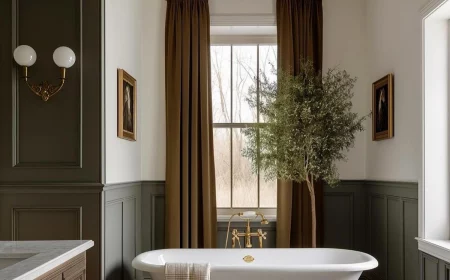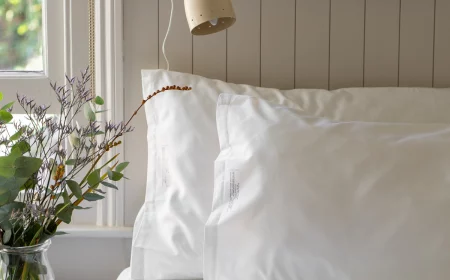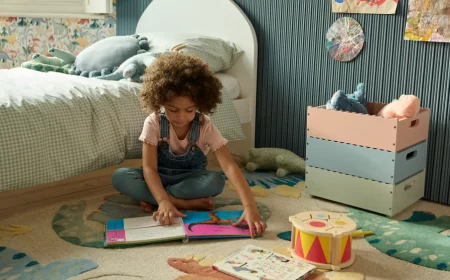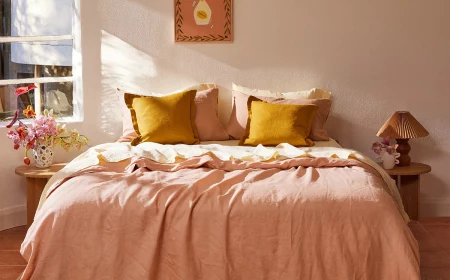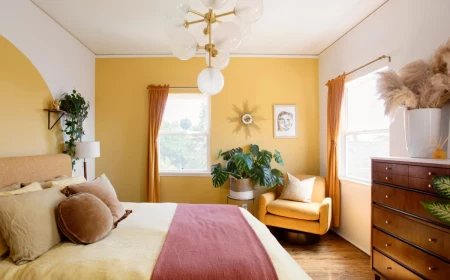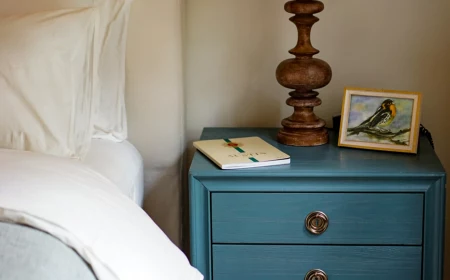The Honest Truth About Building a Pallet Bed (And How to Do It Right)
Alright, let’s talk about pallet beds. I’ve spent a couple of decades working with wood, from fancy custom furniture to rustic projects for clients who love that reclaimed vibe. And honestly, I get the appeal. Taking something utilitarian like a shipping pallet and turning it into a centerpiece for your bedroom feels resourceful and looks incredibly cool.
In this article
But I’ve also seen the other side of it. The wobbly frames, the mysterious stains, and the mattresses slowly getting ruined. So, this is the guide I wish everyone would read before they start. It’s not just about stacking wood; it’s about understanding what you’re working with and building something that’s not only stylish but also safe and solid.
First Things First: The Real-World Checklist
Before you even start hunting for wood, let’s get a few things straight. People see “free pallets” and think this is a no-cost project. It’s not. But it can be very budget-friendly if you plan it out.
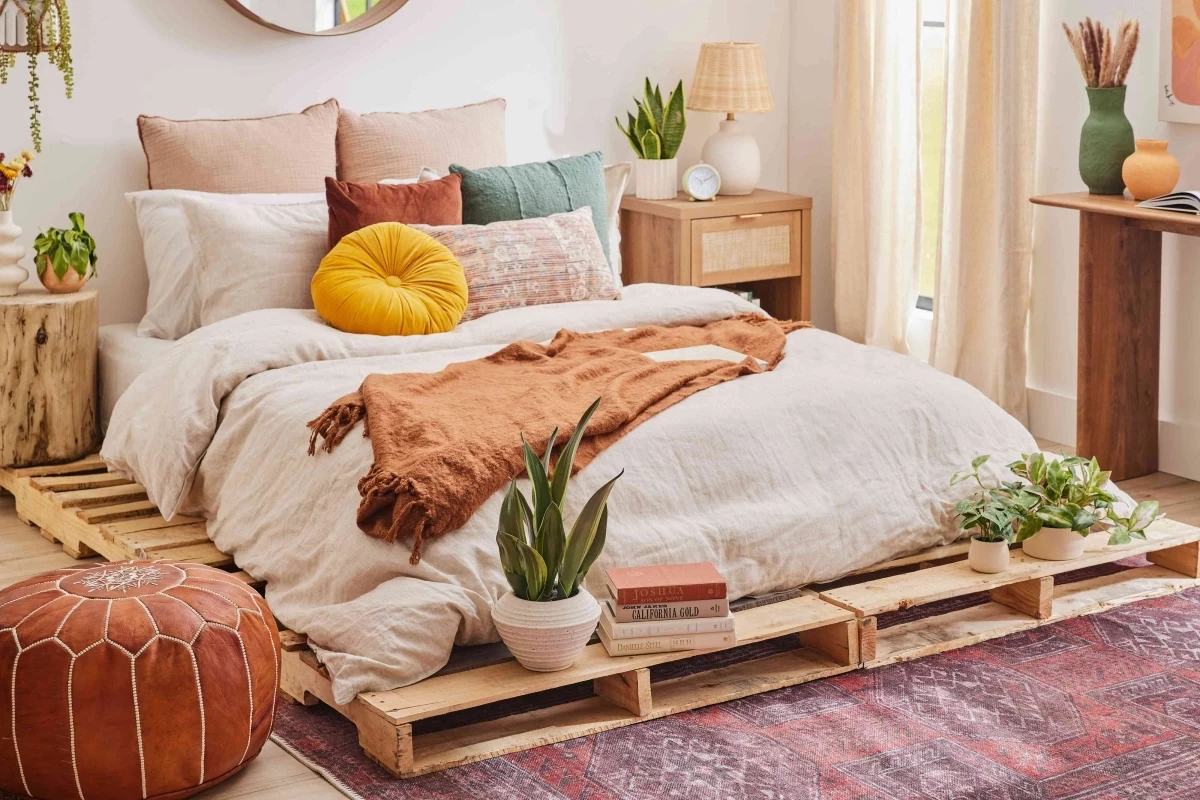
- How many pallets? This is the number one question. For a standard Queen bed, you’ll generally need four 40″x48″ pallets set up in a grid. A Twin or Full usually just needs two side-by-side. For a big King or California King, you might need six.
- What’s the real budget? Plan on spending between $70 and $120. This covers the essentials you probably don’t have lying around. Think a box of quality structural screws ($25), a quart of safe, low-VOC finish ($30), good sandpaper ($15), and maybe a new saw blade.
- How long will this take? Don’t expect to knock this out in an afternoon. If you have the tools and some experience, it’s a solid weekend project. For a beginner, give yourself two weekends: one for finding, dismantling, and cleaning the pallets, and another for sanding, assembly, and finishing.
The Most Important Step: Finding Safe Pallets
I can’t stress this enough: this is the one part of the process you absolutely cannot mess up. A pallet’s job is to ship goods, and to stop pests from hitching a ride across borders, many are treated with some pretty nasty stuff. You do not want that in your bedroom.
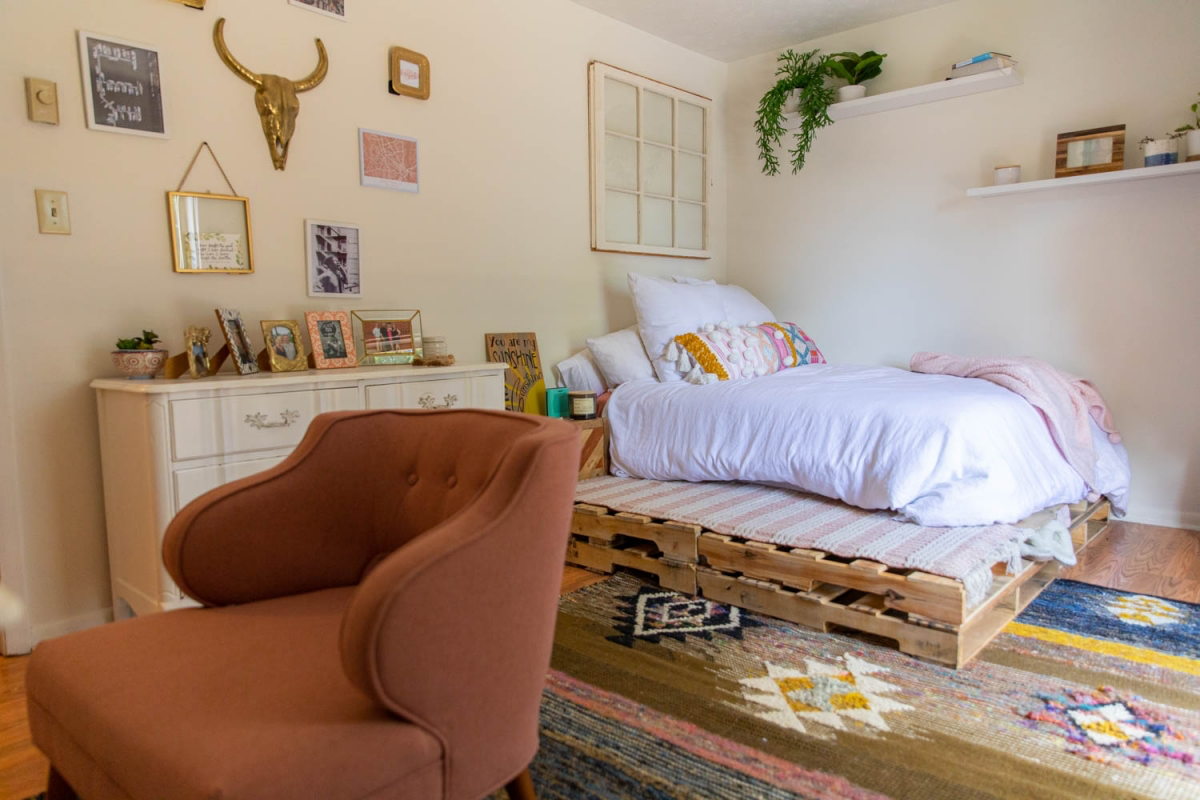
Luckily, there’s a code. Look on the side of the pallet for a stamp that looks a bit like a wheat stalk. That’s the IPPC logo, and next to it is the info you need.
- HT (Heat Treated): This is your green light. It’s the only marking you should look for. It means the wood was baked at a high temperature to kill pests, no chemicals involved. These are safe for your project once you clean them up.
- MB (Methyl Bromide): This is a hard STOP. If you see MB, walk away. It’s a toxic fumigant that soaks into the wood and is absolutely not safe for indoor use. Even if it looks old, just leave it.
- DB (Debarked): This just means the bark was removed. It’s fine, but you still need to see that ‘HT’ stamp to be sure.
- No Stamp? Be cautious. Pallets used for domestic shipping might not be stamped. If you can’t be 100% certain of where it came from (like a delivery of clean paper goods to a local business), it’s better to pass.
Heads up! Avoid pallets with obvious red flags like bright colors (blue or red ones are usually rentals and not free for the taking), oily stains, or weird chemical smells. If it smells like anything other than wood, it’s a no-go.
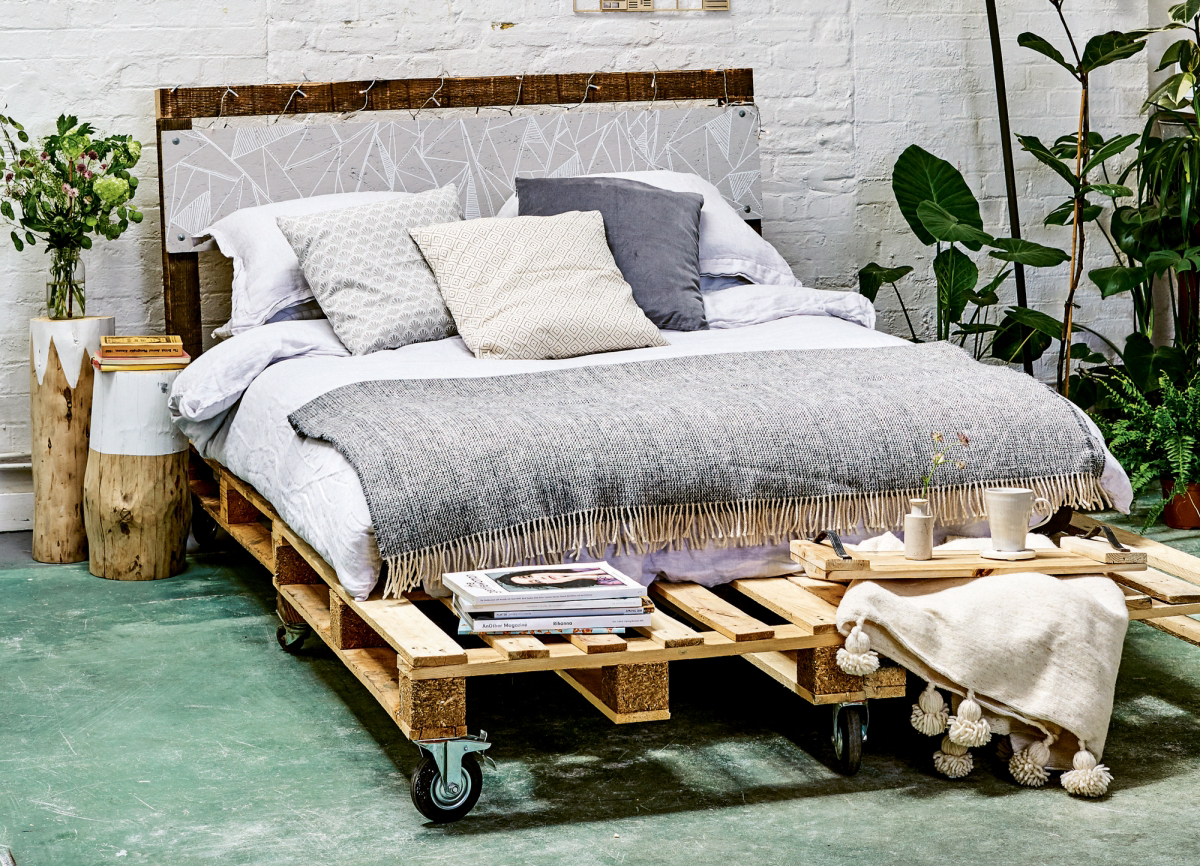
Your Toolkit & The Teardown
Getting pallet wood apart without destroying it is the first real challenge. They’re built to stay together, and the spiral-grooved nails are stubborn.
For your toolbox, you’ll need some basics: a drill, a random orbit sander, and a hammer. But how you take the pallet apart is a big decision.
- The Tough Method (Pry Bar & Muscle): This is the low-cost route. It takes a lot of effort, and you’ll probably split a few boards. A good tip is to use a scrap block of wood under your pry bar to spread the pressure and reduce cracking.
- The Pro Method (Reciprocating Saw): This is how the pros do it, and it’s a game-changer. Get a long bimetal blade (for cutting wood and metal) and just slice right through the nails between the deck boards and the main stringers. It’s way faster and saves the wood. You’ll just have to punch out the leftover nail heads later.
- The Specialty Tool: By the way, they make tools specifically for this called “pallet busters” or “deck wreckers.” They’re long-handled levers that give you amazing leverage and pop boards off cleanly. They’re a great investment if you plan on doing more than one project.
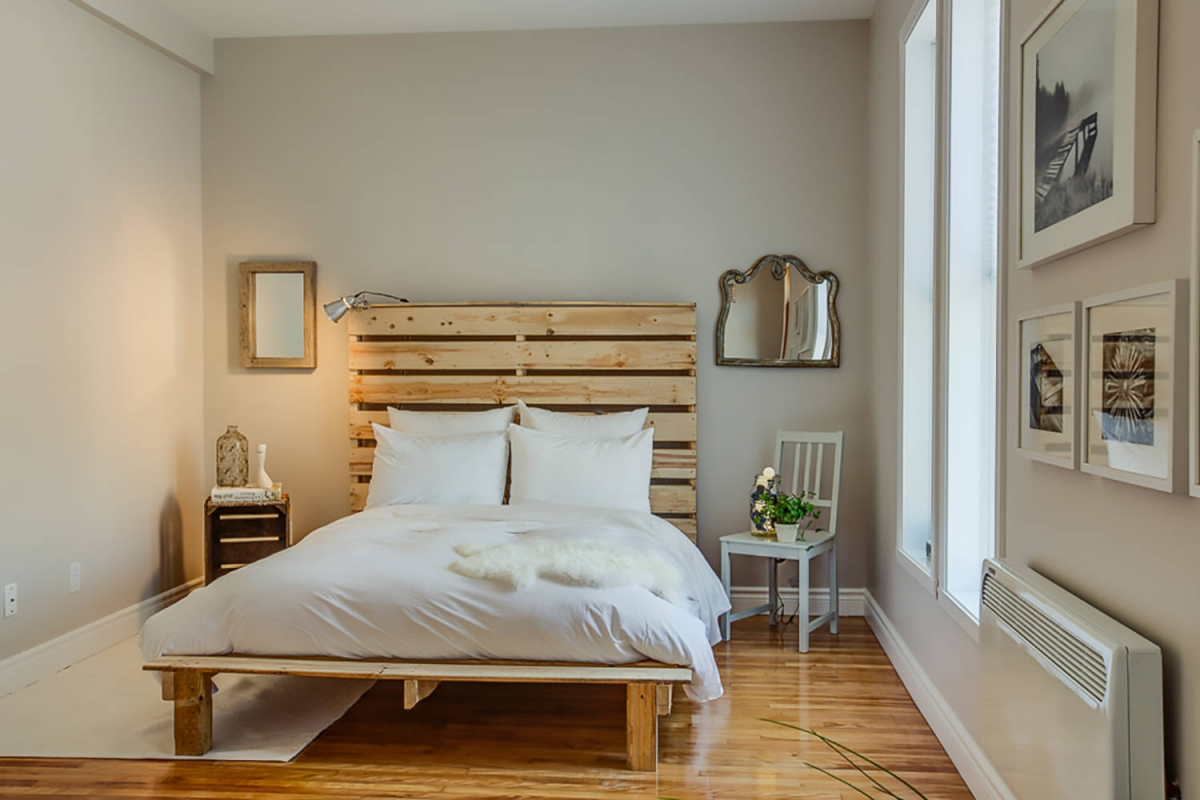
Prep Work: Turning Rough Wood into a Bed
Once you have a pile of boards, the real prep begins. Take them outside and give them a good scrub with a stiff brush and soapy water. For peace of mind, I like to use a mix of one part bleach to ten parts water to kill any potential mold spores. Rinse them well and then let them dry completely.
And I mean completely. This can take several days. If you bring damp wood inside, it will warp and crack as it dries. A quick tip: if you’re not sure, bring one board inside for 24 hours. If it doesn’t feel cool or damp and stays flat, the rest are probably ready.
Sanding is non-negotiable. It’s the difference between a splinter-factory and a smooth piece of furniture. Start with coarse 80-grit sandpaper to remove the rough texture, then move to 120-grit, and finish with a fine 220-grit for a surface that feels great to the touch. Always, always wear a good dust mask during this step.
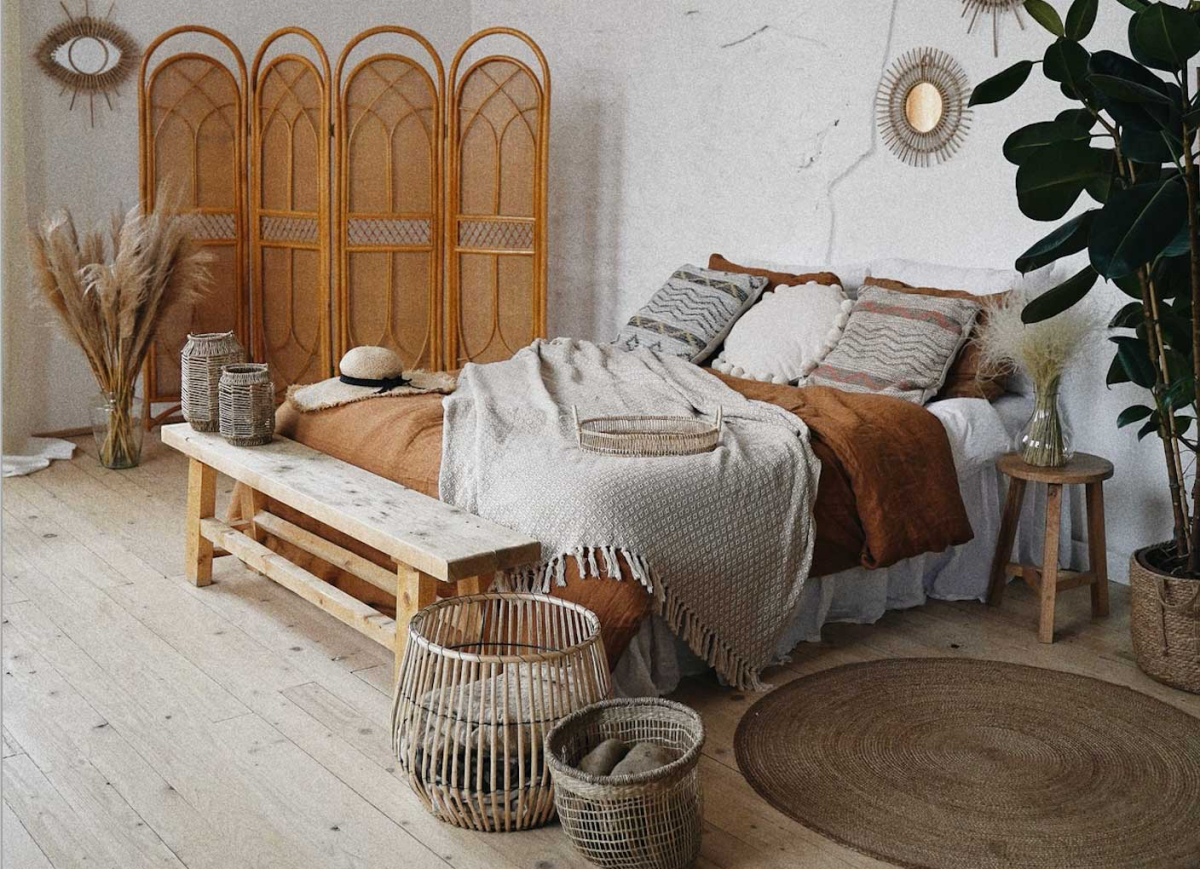
Building a Frame That’s Actually Sturdy
A proper bed needs to support a mattress evenly. The gaps on a standard pallet are way too wide and will cause your mattress to sag and wear out prematurely. You have two solid options here:
- Add More Slats: Use boards from your extra pallets to fill in the gaps. Cut them to size and screw them in, aiming for a space of no more than 3 inches between each slat.
- Use a Solid Platform: This is my preferred method for a perfectly even surface. Get a sheet of 1/2-inch or 3/4-inch plywood, cut it to the size of your mattress, and lay it over the pallet frame. Pro tip: Drill a grid of 1-inch holes throughout the plywood to allow the mattress to breathe and prevent moisture buildup.
When you assemble the frame, you have to secure the pallets to each other. Don’t just stack them! They will shift and creak. Use good structural screws (not brittle drywall screws) and always pre-drill your holes to prevent the dry wood from splitting. To join pallets side-by-side for a queen or king, flip the frame over and use mending plates or a few 1×4 boards screwed across the seams to lock everything into one solid unit.
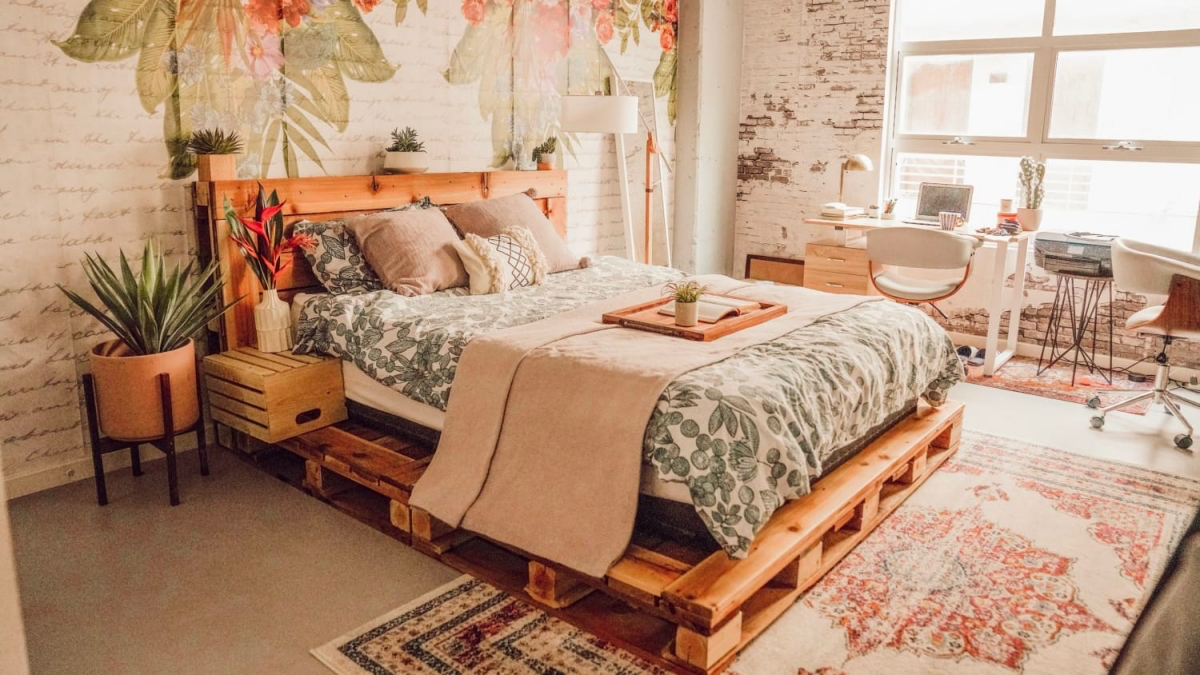
Oh, and a big heads-up: A finished pallet bed is HEAVY. Assemble it in the room where it will live. Trust me, trying to move it later is a major headache and definitely a two-person job.
Finishing Touches and Finding Your Style
The final finish isn’t just for looks; it seals the wood, locking in any remaining dust and preventing future splinters. Since you’ll be sleeping right over this, I strongly recommend a zero-VOC or low-VOC finish. Look for water-based polyurethane, tung oil, or a hardwax oil. They’re much better for your indoor air quality. Apply at least two coats for a durable, professional feel.
The prep and finish are what define the style:
- For an Industrial Look: Keep some of the rough character—the stamps, the nail stains. Just do a light sanding and seal it with a matte clear coat.
- For a Scandinavian Vibe: Use a lighter wood like pine and sand it perfectly smooth. A clear water-based sealer or a light whitewash will keep it looking bright and clean.
- For a Bohemian Feel: Embrace the imperfections. Mix woods from different pallets and arrange them in a low-profile platform.
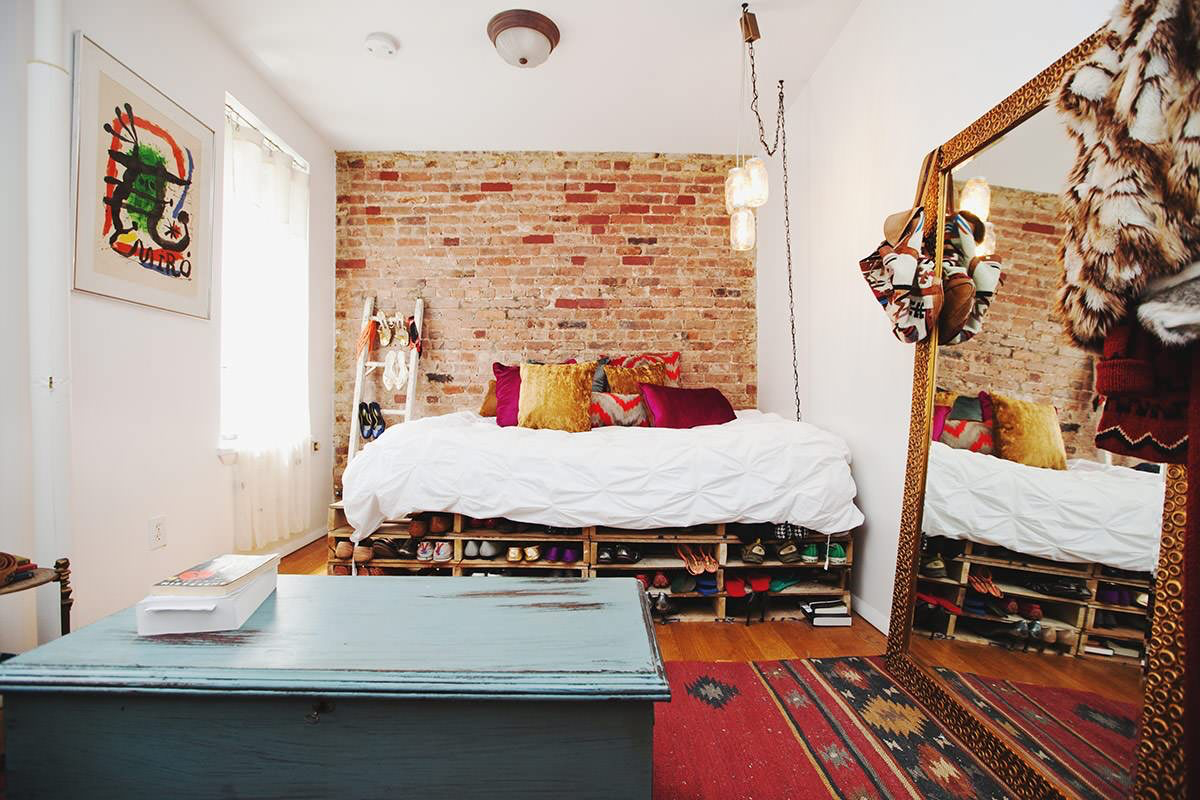
A Final Reality Check
Building a pallet bed is a fantastic and rewarding project, but it requires tools, time, and a dedicated space (preferably outdoors) for the messy work of cutting and sanding. If you’re in a small apartment or aren’t confident about identifying safe pallets, it’s okay to reconsider.
If you love the aesthetic but not the process, here’s an alternative: ask a local woodworker to build you a frame from new, inexpensive pine. They can mimic the pallet look perfectly, and you’ll get a beautiful, structurally sound bed without any of the risks or guesswork. Sometimes the smartest DIY move is knowing when to call a pro.
Galerie d’inspiration
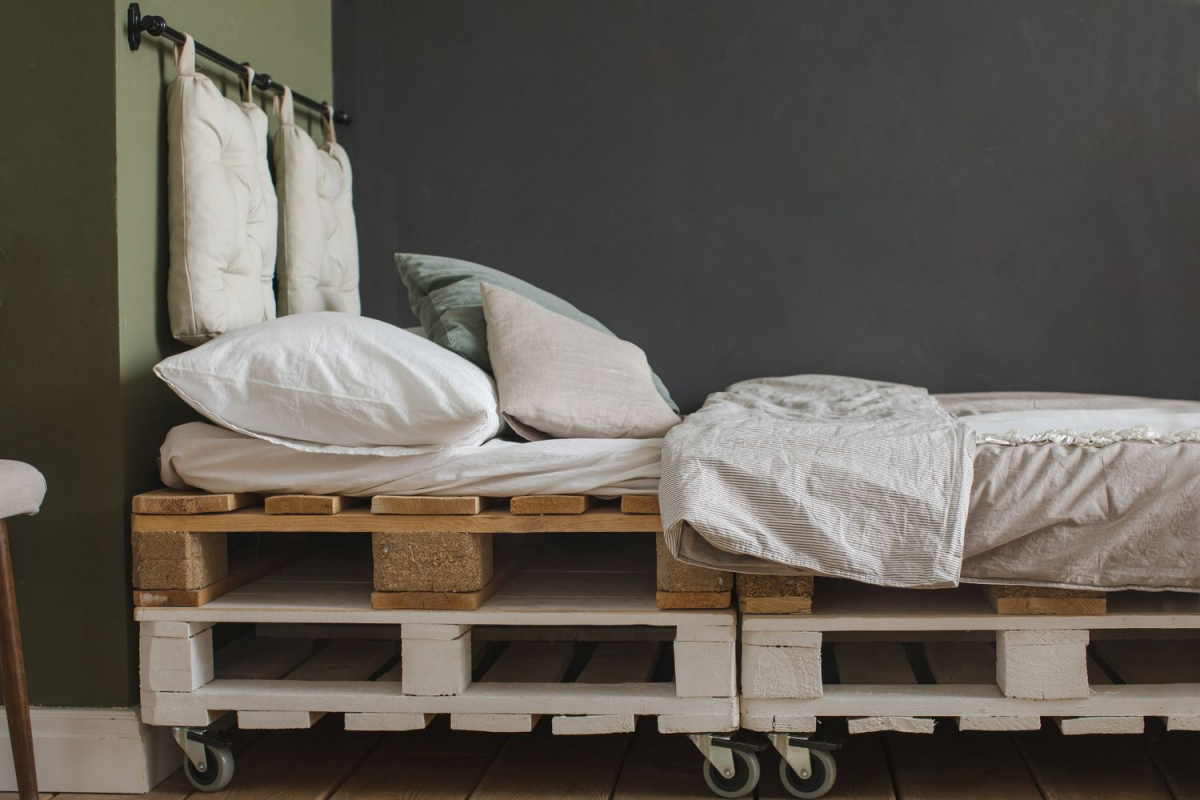

Once you’ve sourced safe, heat-treated (HT) pallets, a deep clean is non-negotiable. This isn’t just a quick wipe-down; it’s about preparing the wood for its new life in your bedroom.
- Start with a stiff brush to remove all loose dirt, cobwebs, and debris.
- Use a pressure washer if you have one, or a hose with a high-pressure nozzle, to dislodge grime from deep within the wood grain.
- Scrub the surface with a solution of water and a mild detergent, like castile soap. Avoid harsh chemicals.
- Let the pallets dry completely in the sun for at least 48 hours to prevent mold and warping.
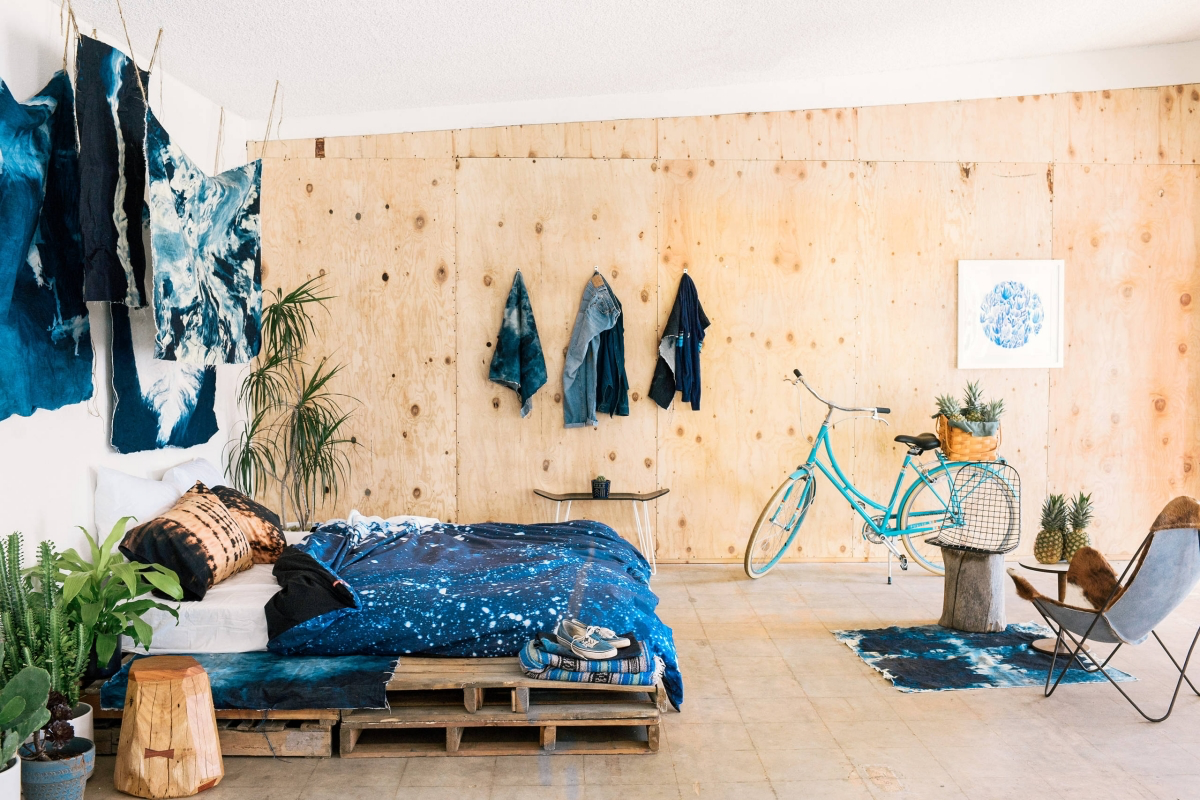
Want to elevate the look and add a warm, cozy glow?
Integrated lighting is a game-changer for pallet beds. The gaps between the slats are perfect for hiding LED light strips. Opt for a warm white (2700K-3000K) smart LED strip kit, like the Philips Hue Lightstrip. You can tuck it underneath the top deck of the pallets, creating a soft, floating effect that’s perfect for evening ambiance. Most come with a remote or app for easy control from bed.
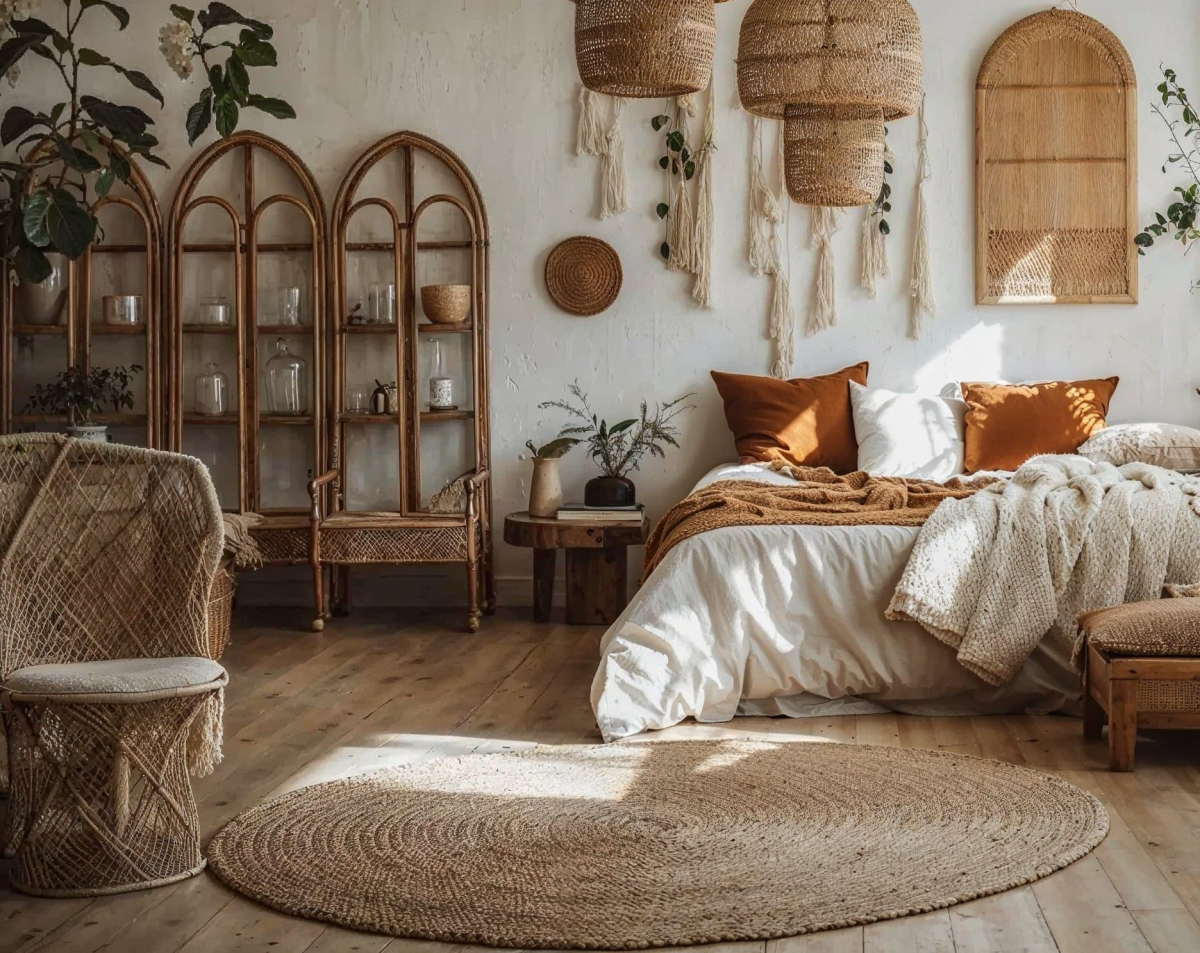
A pallet bed is a strong statement piece that anchors a room’s style. For a bohemian vibe, layer it with macrame wall hangings, an abundance of pillows, and a faux fur throw. If you prefer an industrial look, pair it with metal side tables, Edison bulb lamps, and crisp, neutral-colored linen bedding. The raw wood provides a perfect canvas for your personal aesthetic.
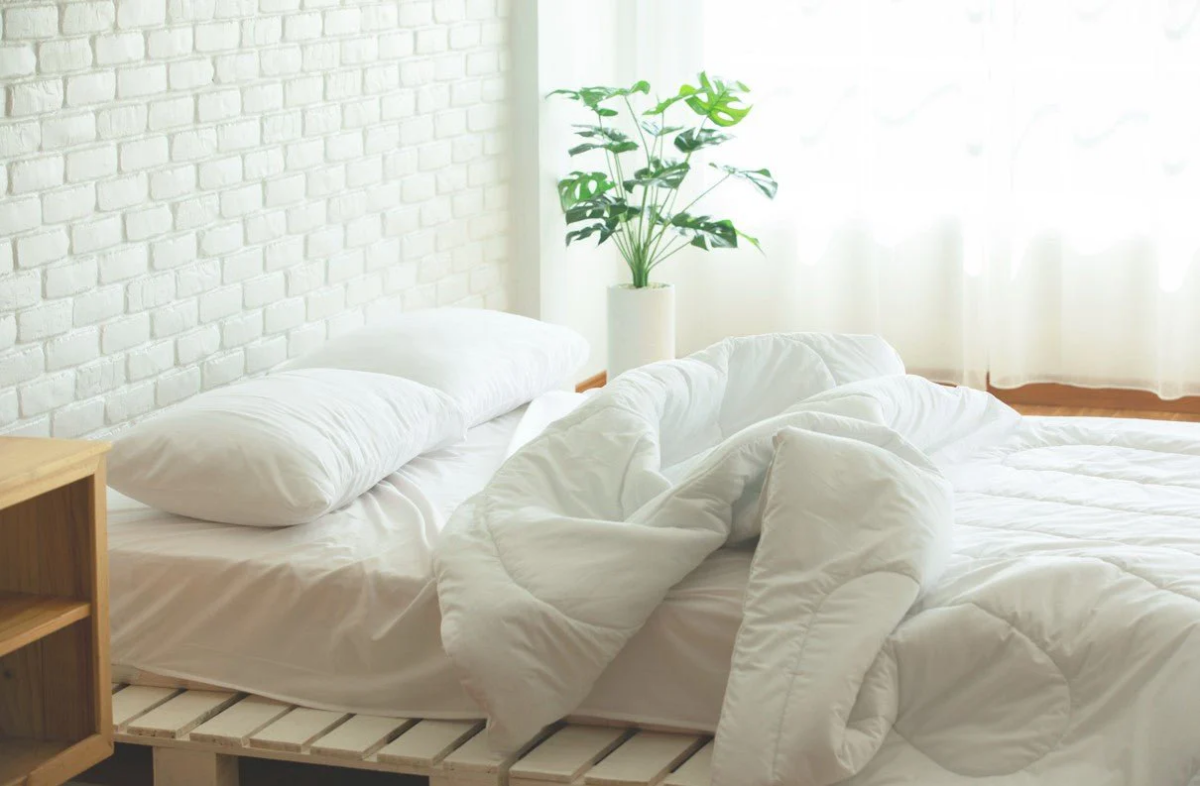
Sleeping closer to the ground can create a sense of stability and calm, a concept rooted in various cultures that associate low-profile living with being more grounded and connected to the earth.
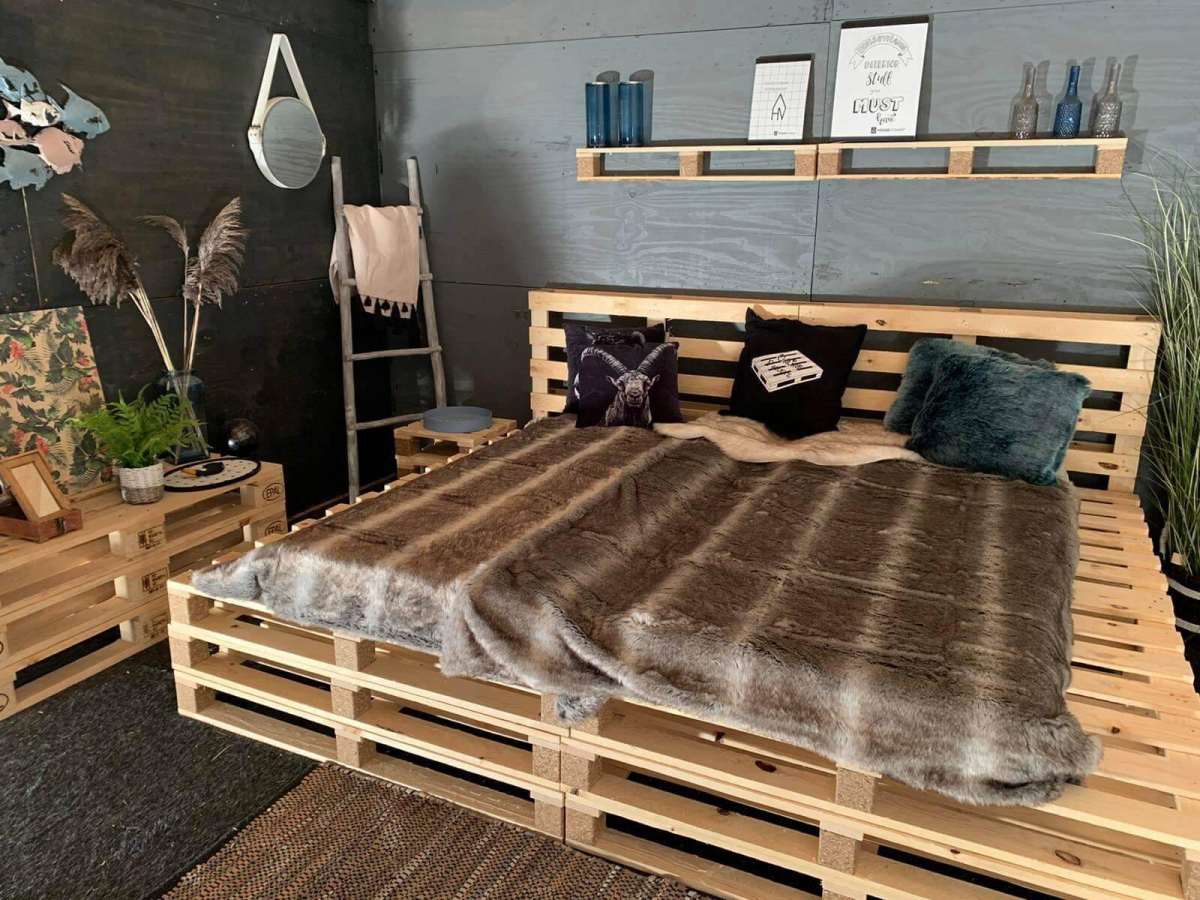
Natural Oil Finish: A hardwax-oil like Osmo Polyx-Oil penetrates the wood, preserving its natural texture and feel while offering durable protection. It’s easy to spot-repair and enhances the grain beautifully.
Polyurethane Varnish: A water-based polyurethane, such as Varathane’s Diamond Wood Finish, creates a protective film on top of the wood. This offers maximum protection against spills and scratches. The trade-off is a slightly less natural feel.
For a truly rustic texture, oil is king. For a family-proof finish, varnish wins.
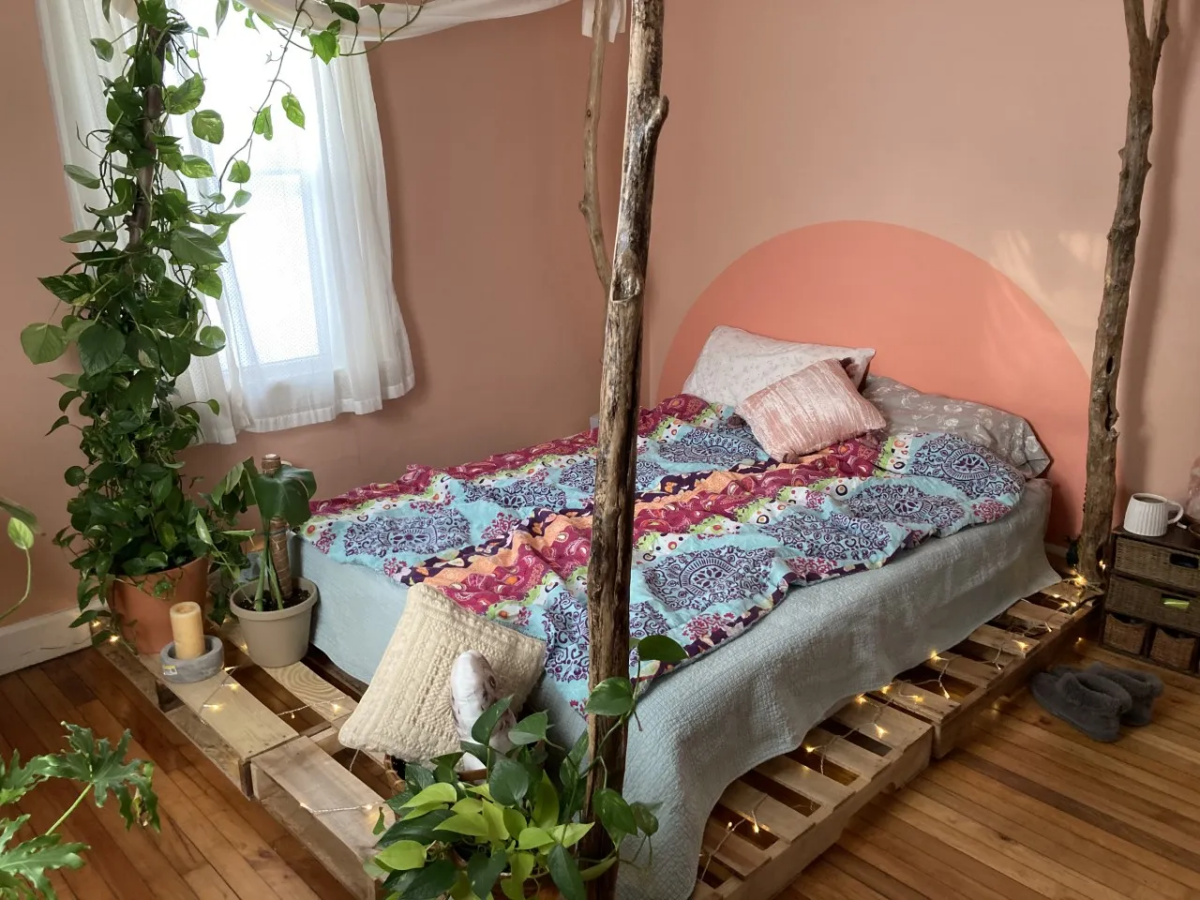
Did you know? When you sand wood, you’re not just smoothing it; you’re cutting and tearing microscopic wood fibers.
This is why a single pass with sandpaper isn’t enough. Start with a coarse grit (like 80-grit) to level the rough surface and remove splinters. Then, move to a medium grit (120-grit) to erase the scratches from the first pass. Finish with a fine grit (220-grit) for a surface that’s truly smooth. Skipping steps is the main reason many DIY pallet beds feel rough.
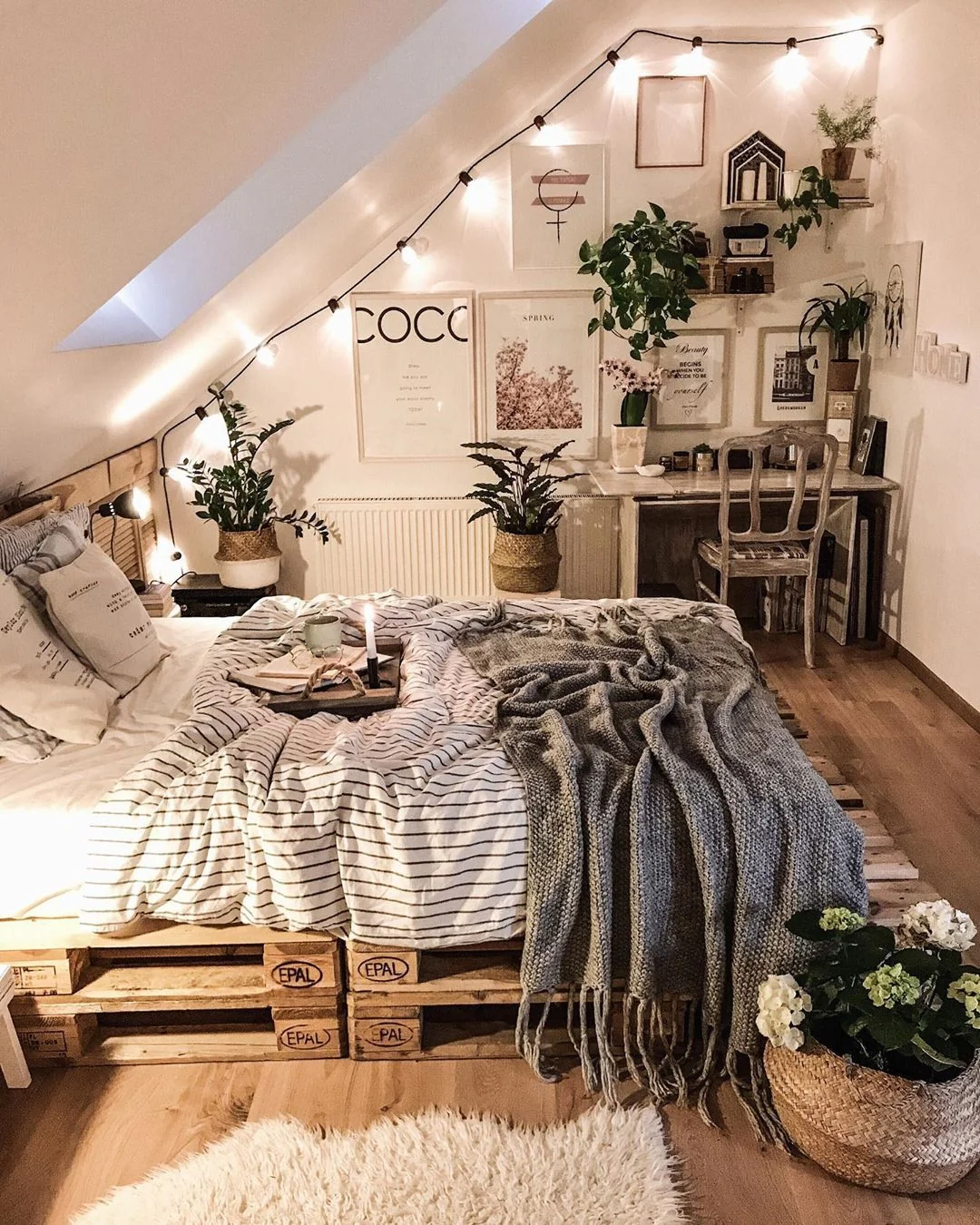
Don’t forget the headboard: The project doesn’t have to stop at the base. Standing a single pallet vertically behind the bed, or mounting a dismantled pallet plank-by-plank onto the wall, creates a cohesive and striking headboard. It visually extends the bed and turns it into a complete, intentional piece of furniture.
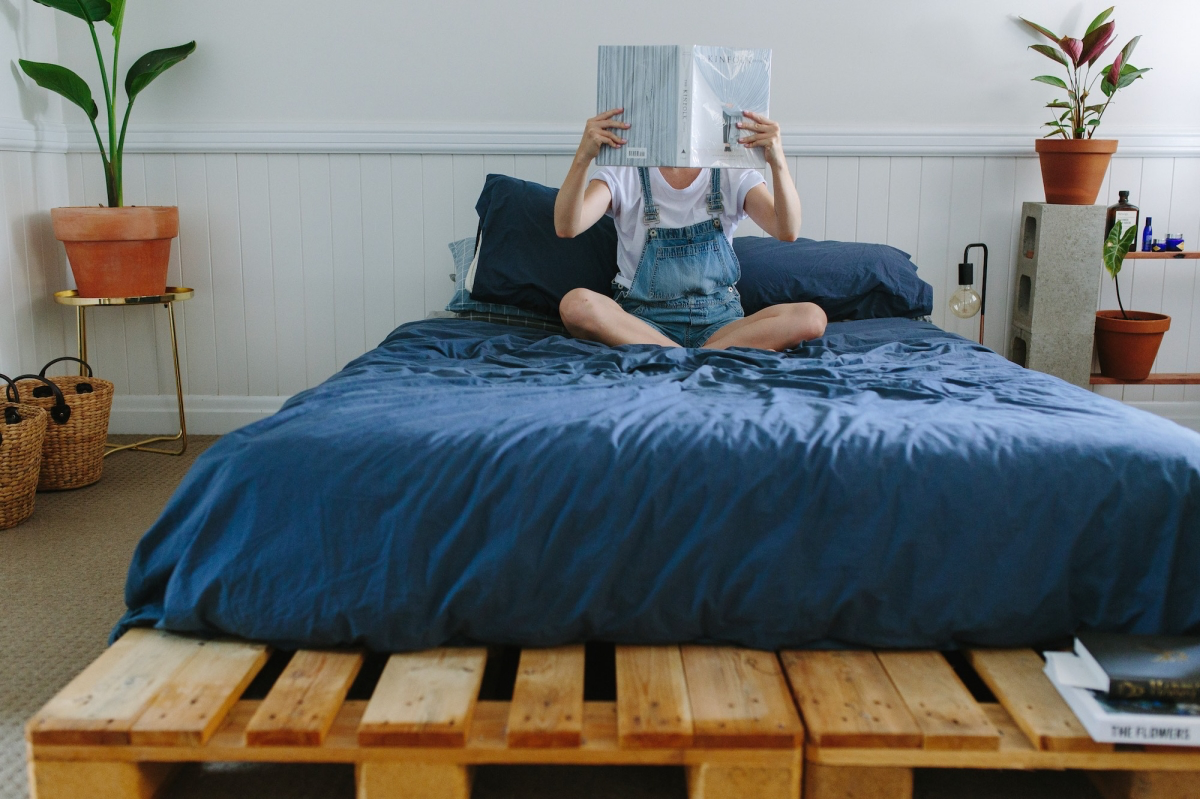
- Disassembles in minutes for easy moving.
- Height can be adjusted by adding or removing a layer.
- Allows for under-bed storage that’s both hidden and accessible.
The secret? The inherent modularity of using individual pallets. Unlike a traditional bed frame, your pallet bed is a system you can easily adapt or take with you.
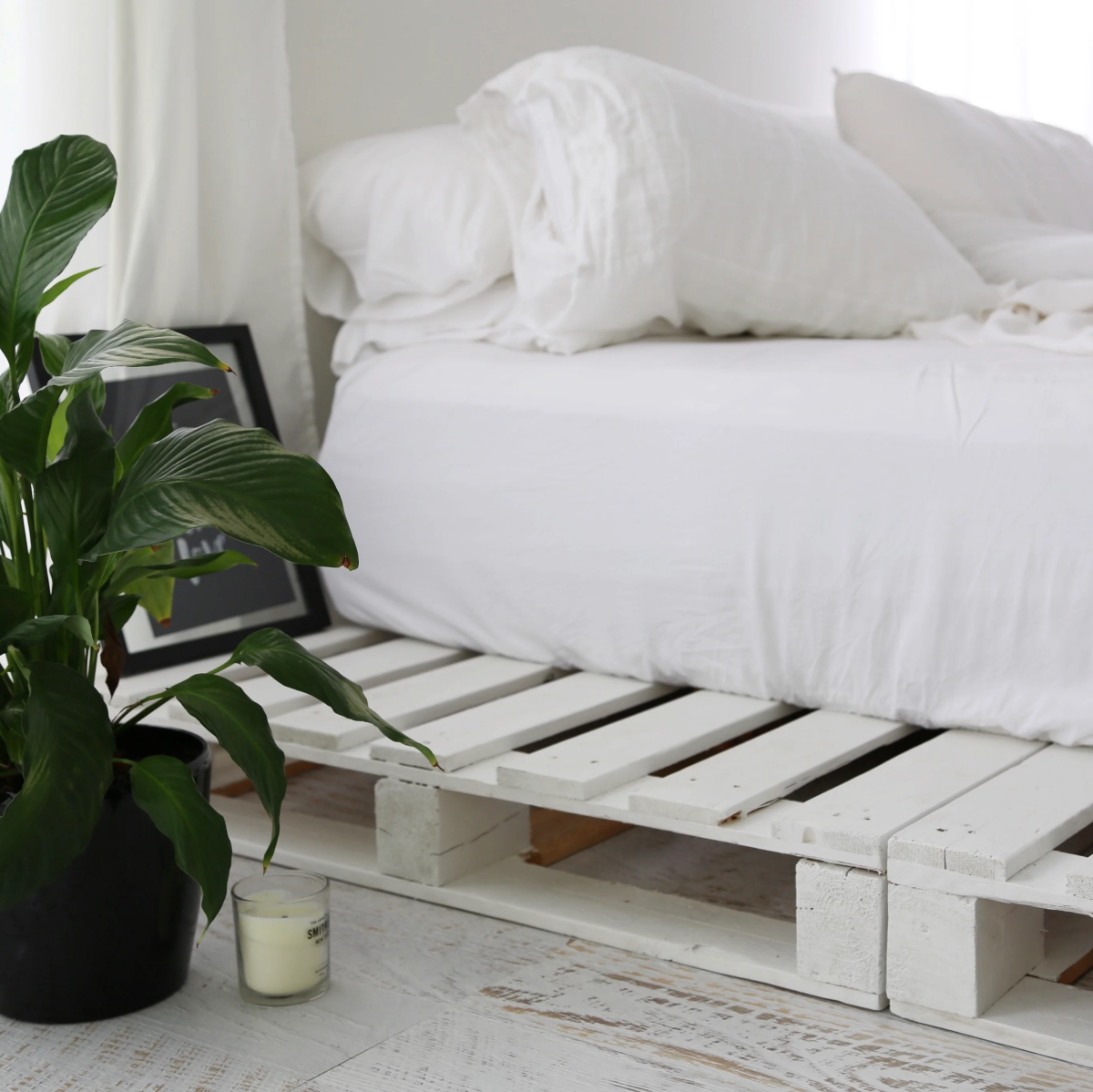
The low-slung profile of a pallet bed shares a design philosophy with traditional Japanese interiors. It echoes the practice of using futons (shikibuton) on tatami mats, a style that emphasizes simplicity, a connection to the ground, and maximizing the feeling of space in a room by keeping furniture low.
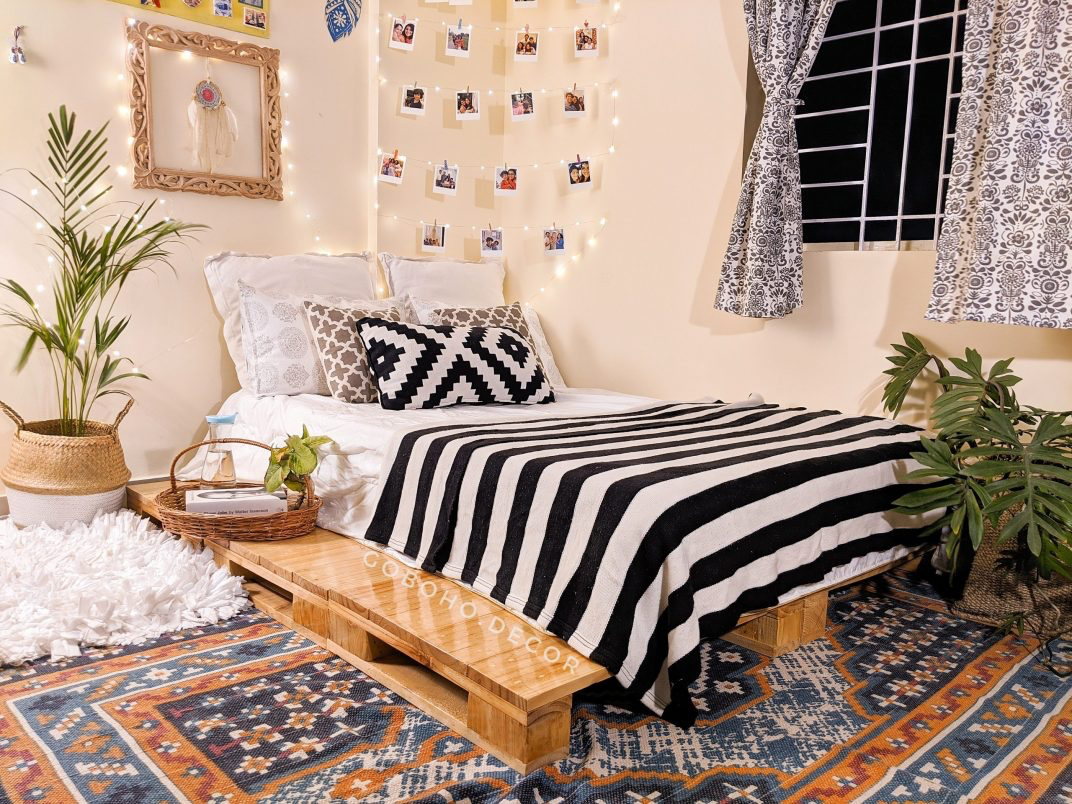
- A weekly vacuum with a brush attachment prevents dust from accumulating in the nooks and crannies.
- Every few months, inspect the wood for any new splits or splinters, sanding them down as needed.
- If you used an oil finish, consider a light re-application once a year to keep the wood from drying out.
Clean Start Alternative: For a similar look without the intense cleaning, consider building a frame from new, inexpensive pine boards from a hardware store like Home Depot. You get the DIY satisfaction and a guaranteed safe, clean start.
Character-Rich Alternative: For a more robust and weathered look, reclaimed scaffold planks are fantastic. They are thicker, carry more history, but often come at a higher price point than pallets or new pine.

